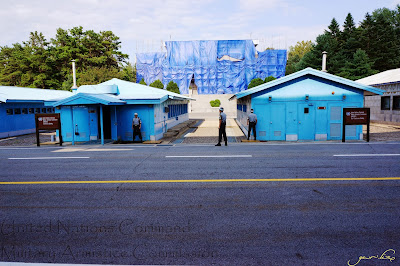The South Korean Military was informed of the third tunnel by a North Korean defector, Kim Bu-Seong, who fled communist state on September 5, 1974.
He claimed to have measured the tunnel by looking at a large poplar tree in the Southern Demilitarized Zone from North Korean 212 GP.
One hundred seven PVC cylinder pipes of 7.5cm in diameter were then filled with water and installed every 2 meters along the expected invasion route to the south.
Three years later, on June 10, 1978, one of the cylinder pipes exploded with water shooting up into the air. Hence, five more cylinder pipes were quickly installed nearby, and South Korea was finally able to penetrate the tunnel that North Korea had intended for use in a military invasion.
From October 4, 2003 to June 19, 2004, the TBM machine bored a 358 meter long, 3 meter diameter tunnel at a gradient of 11 degrees. This tunnel was opened to the public for tours on June 30, 2004.
| |
The third tunnel is arch shaped and 1,635 meters in total length. It lies 73 meters beneath the surface, and is 2 meters in height and 2 meters in width.
When this tunnel was discovered, it ran 1,200 meters up to the Military Demarcation Line and 435 meters into the south. Today, visitors can explore the tunnel up to 265 meters, at the end of which there is a third blockade.
Beyond the blockade, the tunnel leads through to the Military Demarcation Line.
There is evidence that this tunnel was intended for invasion of the south.
First, the tunnel is sloped approximately 3 degrees toward the north, which causes water to drain to the north.
Second, the dynamite holes, meant to explode the granite, face south.
Third, although coal was never found in this area, traces were left upon the rock wall to disguise the tunnel as an old coalmine.
|























































